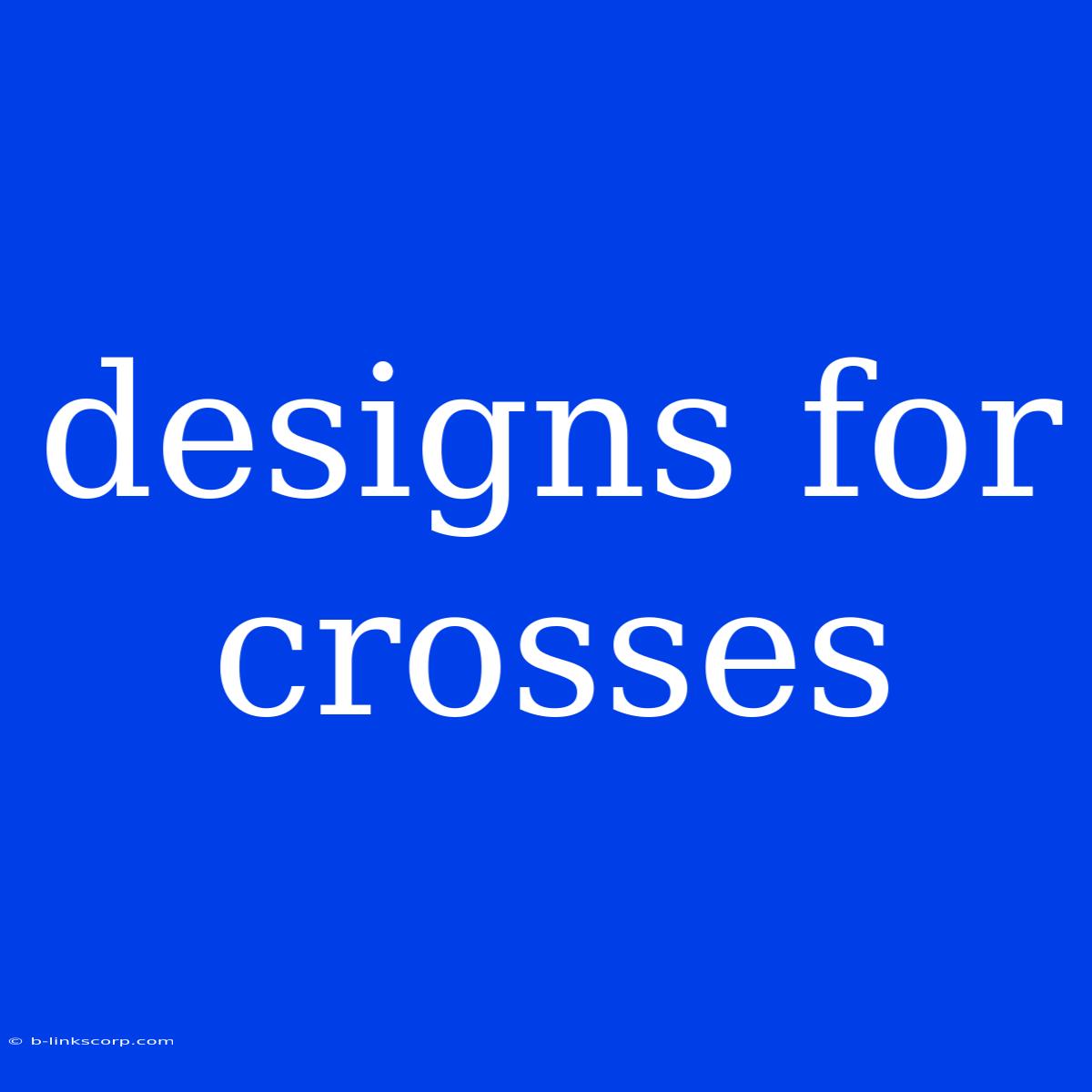Designs for Crosses: A Guide to Symbolism and Variety
The cross, a simple yet powerful symbol, has been used for centuries to represent faith, hope, and sacrifice. While the traditional Latin cross remains prevalent, there is a remarkable diversity of cross designs, each carrying its own meaning and aesthetic appeal. This guide explores some of the most common and intriguing cross designs, delving into their symbolism and cultural significance.
Traditional Cross Designs:
1. Latin Cross: The most recognized cross design, with a vertical beam longer than the horizontal beam. It symbolizes the crucifixion of Jesus Christ and is widely used in Christianity.
2. Greek Cross: Equal length arms, representing the four cardinal directions. It symbolizes the four Gospels and the universality of Christ's message.
3. Celtic Cross: A Latin cross with a circle surrounding the intersection point. This design, originating in Ireland, symbolizes the unity of heaven and earth, the sun, and the eternal cycle of life.
4. Orthodox Cross: A three-barred cross with a slanted beam at the top and a small platform at the bottom. This design is commonly used in Eastern Orthodox Christianity and represents the inscription above Jesus' head on the cross.
Variations on the Classic Cross:
1. Cross of Lorraine: A double-barred cross with a shorter, slanted top bar, associated with the French region of Lorraine. It symbolizes hope, freedom, and resistance.
2. Maltese Cross: An eight-pointed cross with V-shaped arms, historically associated with the Knights Hospitaller. It represents strength, protection, and bravery.
3. Patriarchal Cross: A three-barred cross with a small slanted bar at the top and another at the bottom, used by the Patriarch of Constantinople. It represents the divine nature of Christ and the Trinity.
Modern Cross Designs:
1. Abstract Cross: These crosses often use geometric shapes, lines, and colors to create a unique and minimalist design. They represent a departure from traditional forms and often reflect contemporary artistic trends.
2. Personalized Crosses: These crosses can incorporate elements that hold personal significance for the wearer, such as initials, dates, or symbols. They are often crafted from unique materials and reflect the individual's unique faith and identity.
Cross Design Material and Usage:
Crosses are made from a wide array of materials, including:
- Wood: A traditional material that evokes the crucifixion of Christ.
- Metal: Gold, silver, bronze, and iron are frequently used for durable and ornate crosses.
- Stone: Marble, granite, and other stone are often used for memorial crosses and cemetery markers.
- Glass: A delicate and beautiful material used for stained glass windows and decorative crosses.
Crosses are found in a variety of contexts, including:
- Religious artifacts: Used in churches, homes, and personal devotion.
- Jewelry: Necklaces, bracelets, and rings featuring cross designs.
- Cemetery markers: Memorial crosses commemorating the deceased.
- Artwork: Crosses are featured in paintings, sculptures, and other artistic mediums.
Choosing the Right Cross Design:
The choice of cross design often reflects personal beliefs, cultural background, and aesthetic preferences. Whether you are looking for a traditional symbol of faith or a modern expression of spirituality, the diversity of cross designs offers a unique and meaningful way to express your beliefs.

